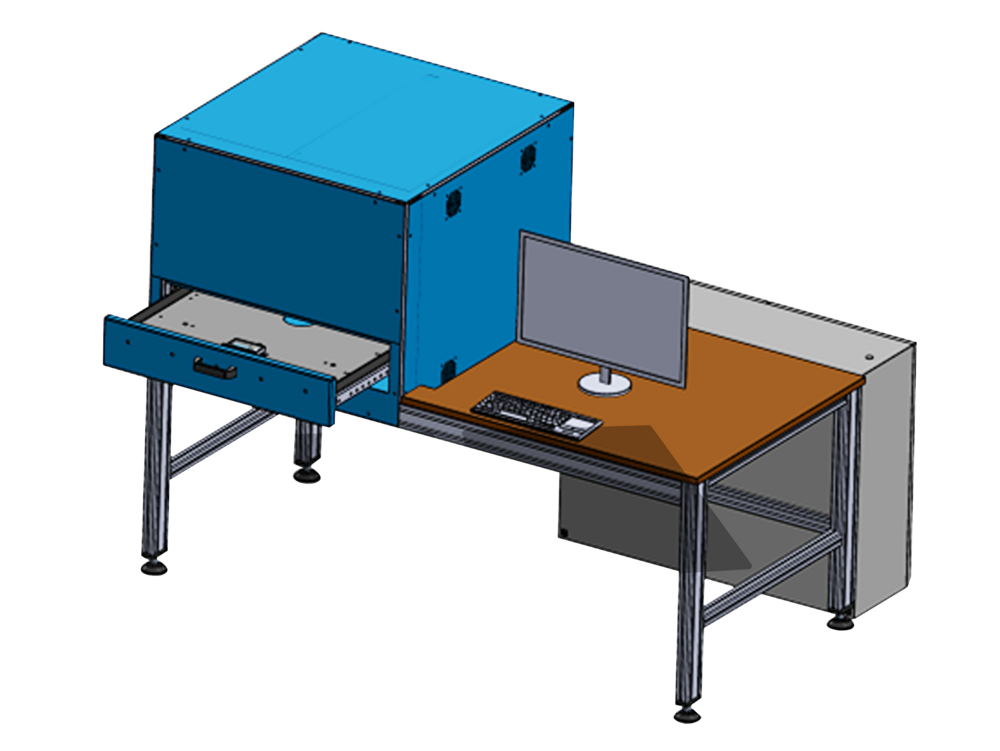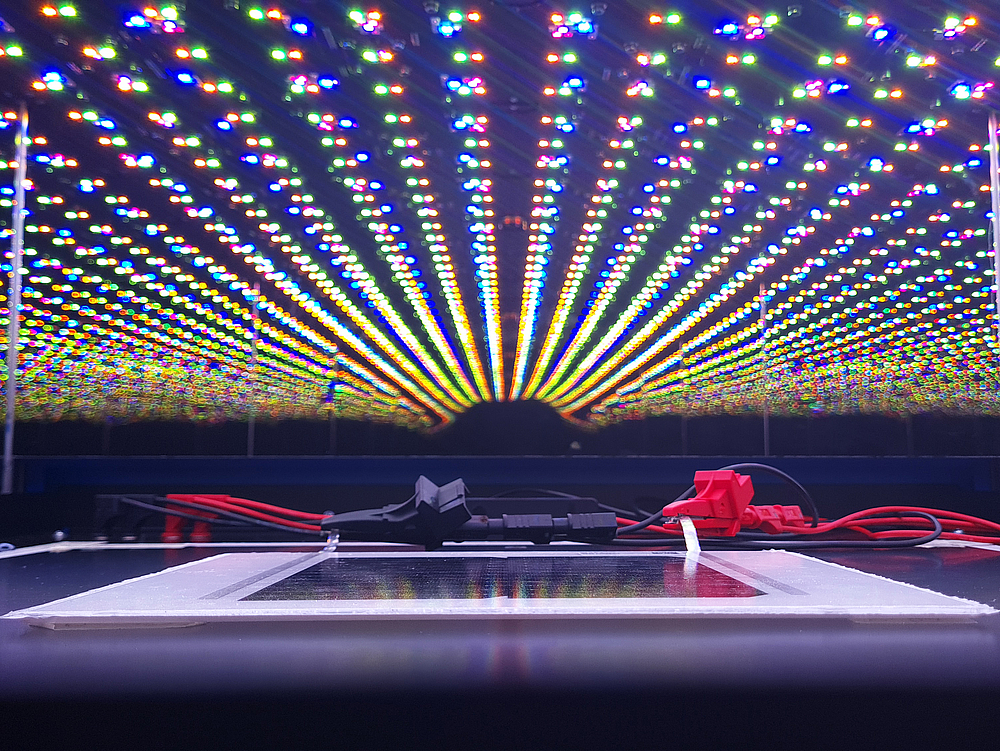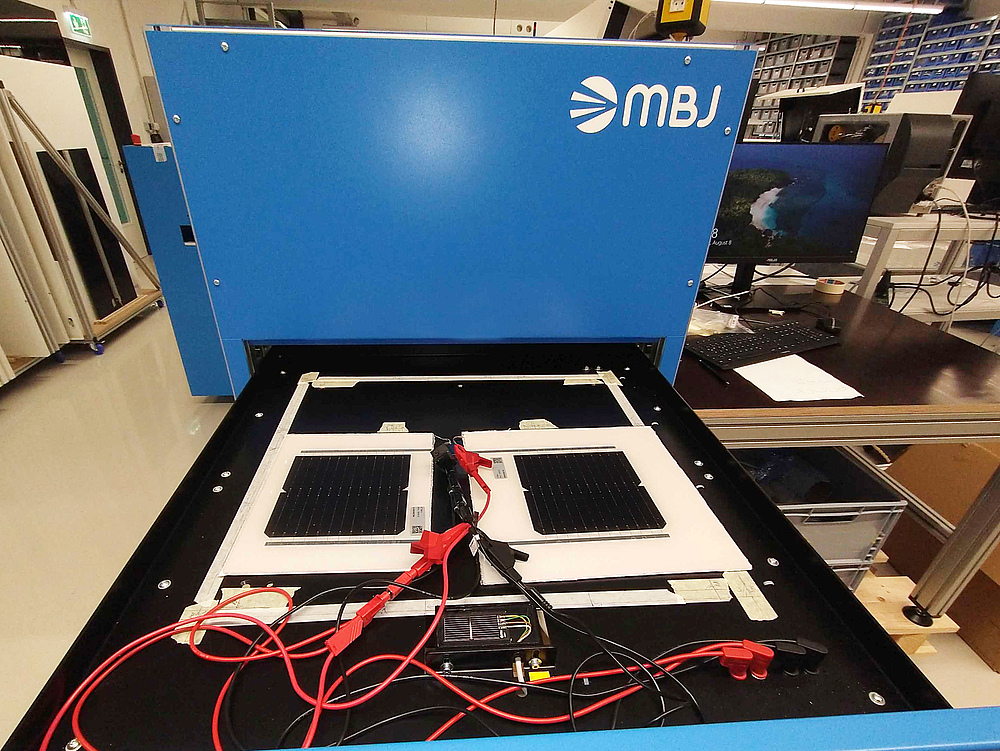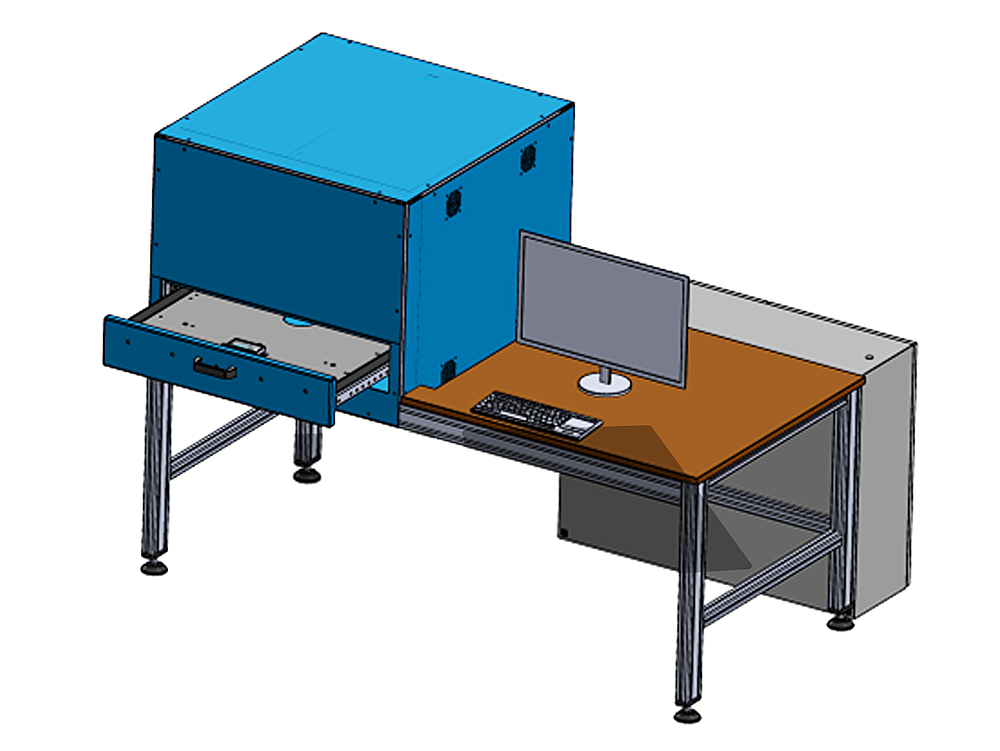MBJ Steady State Sun Simulator
The MBJ Steady State Sun Simulator is designed for the characterization of small modules in the development of new cell technologies such as perovskites in the laboratory.
The compact measuring system consists of a continuous light-capable sun simulator and an integrated electroluminescence camera. Modules up to a size of 450 x 450 mm can be tested.




